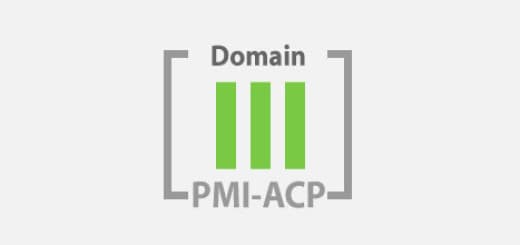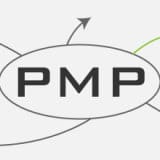PMI-ACP Tools and Techniques: Agile Estimation

[PMI-ACP® Exam Study Notes] Agile Estimation is one of the ten Tools and Techniques for the PMI-ACP® exam. The “Tools and Techniques” accounts for a total of 50% of all the questions to be found on the exam paper. According to the PMI-ACP® exam content outline, Agile Estimation includes relative sizing, story points, wide band Delphi, planning poker, affinity estimating and ideal time.
PMI-ACP® Exam Importance: around 3-6 questions (~5% of all questions)
Article Highlights
PMI-ACP® Tools and Techniques: Agile Estimation
- Agile estimation is the making use of Agile tools and techniques to make estimations
- Estimates are usually expressed in a range ($300 – $400 or 10 – 12 months)
- Estimates are better be done by the ones who have the most knowledge of the item (e.g. developers who are actually working on the feature)
- When a user story is particularly vague and unclear, a high value would typically be assigned knowing that it will be further refined later on
- Parking Lot Chart
- usually used in Feature Driven Development
- an artifact used to organize and categorize user stories by theme (similar to the Product Backlog)
- indicates the possible feature releases
- Relative Sizing
- estimation types: relative estimation (easier and faster) vs absolute estimation (more difficult and not accurate)
- relative sizing: make use of a simple system to roughly estimate and track progress in relative terms using a comparative approach
- estimation is done using triangulation: choose several user stories as the reference for the different sizes (S, M, L, XL, XLL) and the other user stories will be estimated with comparison to the chosen one
- Agile Planning Steps
- the relative sizing of user stories and team velocity are used to determine the amount of work to be performed
- the priority may be calculated by dividing value with relative sizing
- group user stories with logical relations
- re-estimate sizing as needed
- A spike is a fast, time-boxed (several days at most) experiment / investigation that may be used to come up with an estimate for a user story that is difficult to estimate upfront
- Story Points
- story points are a fixed and relative value of development effort
- story point estimations should include all works involved (i.e. research, risks, analysis, actual work, etc.)
- the story points scale is based typical on Fibonacci sequence (1,2,3,5,8 which corresponds to S,M,L,XL,XXL)
- the Agile team can tailor the scale as needed
- 2 story points carry the equivalent of twice the amount of work of 1 story point
- the sum of all story points to be completed in one iteration is the velocity for the iteration
- story points can be re-estimated later, but the accuracy of Agile metrics like velocity will be hampered
- benefits of making use of story points:
- can motivate team members to achieve more story points in a fixed time (rather than telling the team has achieved 130 hours of work last week, it makes sense to tell them they break the record of 42 story points last week)
- avoid Pakinson’s Law (work tends to expand to fill up all the available time)
- avoid Student Syndrome (wait to begin work until the deadline is imminent)
- notes: the sum of story point estimates of all user stories of an epic may exceed that of the epic because after decomposition, the estimate is more accurate
- A 0 story point user story is said to be of minimal effort for a development team
- User stories are to be broken down into tasks during an iteration. It is appropriate to estimate tasks both during iteration planning and throughout the iteration.
- Ideal Time
- an ideal day is a day (usually of 8 hours) without interruptions, the developer can focus on working on the task continuously
- interruptions can be emails, meetings, sick leave, etc.
- can be used in the place of story points in the following Agile estimation tools
- but less ideal as “ideal day” is non-existent and the performances of individual developers are different
- an ideal day is a day (usually of 8 hours) without interruptions, the developer can focus on working on the task continuously
- Buffer
- extra time added to the end of a project to account for delays, obstacles, and other unforeseen issues to help predict an accurate completion date
Agile Estimation Tools and Techniques
- Wide band Delphi
- a consensus-based anonymous group estimation method
- evolves from the Delphi Method – developed in the 1940s by the RAND Corporation as a forecasting tool
- wide band = more interaction and communication
- Steps of wide band Delphi
- Schedule the estimation meeting with team members (and possibly other stakeholders)
- Describe the work to be estimated together with the requirements, resources and constraints
- Everyone gives estimates (usually in terms of man-hour, etc.) individually and anonymously, noting any assumptions and major pieces of work that led to the estimate
- Present the results for discussion e.g. on a chart without disclosing who makes which estimate
- Repeat steps 3 & 4 for 2 to 3 rounds with a view to reach a consensus (an acceptable range of estimates)
- Planning Poker
- a tools to help the implementation of Wide band Delphi
- reference user stories are presented with corresponding story points
- each member to give story points / man-hours / affinity estimates (XS, S, M, L, XL) / ? (if unknown or difficult to estimate) to user stories individually with the use of a set cards with pre-defined set of values (usually in Fibonacci sequence, e.g. 2,3,5,8,13)
- show the cards at the same time and compare the individual estimations to reach a consensus by giving the story points again
- quicker and more accurate to reach an estimate
- Affinity Estimating
- it is the process of grouping requirements into categories or collections for estimation
- in Agile, affinity estimating is usually used to group user stories of similar sizes into groups (a form of triangulation)
- user stories of similar / comparable sizes are placed together to calibrate the scale
- Local Safety
- Local safety is the difference between the 90% confidence estimate of task time and the 50% confidence estimate of task time (a 50% confidence estimate is an aggressive estimate where the estimator only has a 50% confidence that the task will be completed on time whereas a 90% confidence estimate is a conservative estimate).
Summary: Agile Estimation
This PMI-ACP® Exam Study notes touches upon one of the many tools and techniques of the PMI-ACP® exam syllabus – Agile Estimation. Agile Estimation knowledge includes relative sizing, story points, wide band Delphi, planning poker, affinity estimating and ideal time.
Most Popular PMI-ACP Certification Articles
- Top 10 Tips to Prepare for the exam (I got all Proficient in my exam)
- How to Get 21 Contact Hours?
- Over 600+ FREE Quality Mock Exam / Practice Questions





 Hi, my name is Edward Chung, PMP, PMI-ACP®, ITIL® Foundation. Like most of us, I am a working professional pursuing career advancements through Certifications. As I am having a full-time job and a family with 3 kids, I need to pursue professional certifications in the most effective way (i.e. with the least amount of time). I share my exam tips here in the hope of helping fellow Certification aspirants!
Hi, my name is Edward Chung, PMP, PMI-ACP®, ITIL® Foundation. Like most of us, I am a working professional pursuing career advancements through Certifications. As I am having a full-time job and a family with 3 kids, I need to pursue professional certifications in the most effective way (i.e. with the least amount of time). I share my exam tips here in the hope of helping fellow Certification aspirants!





